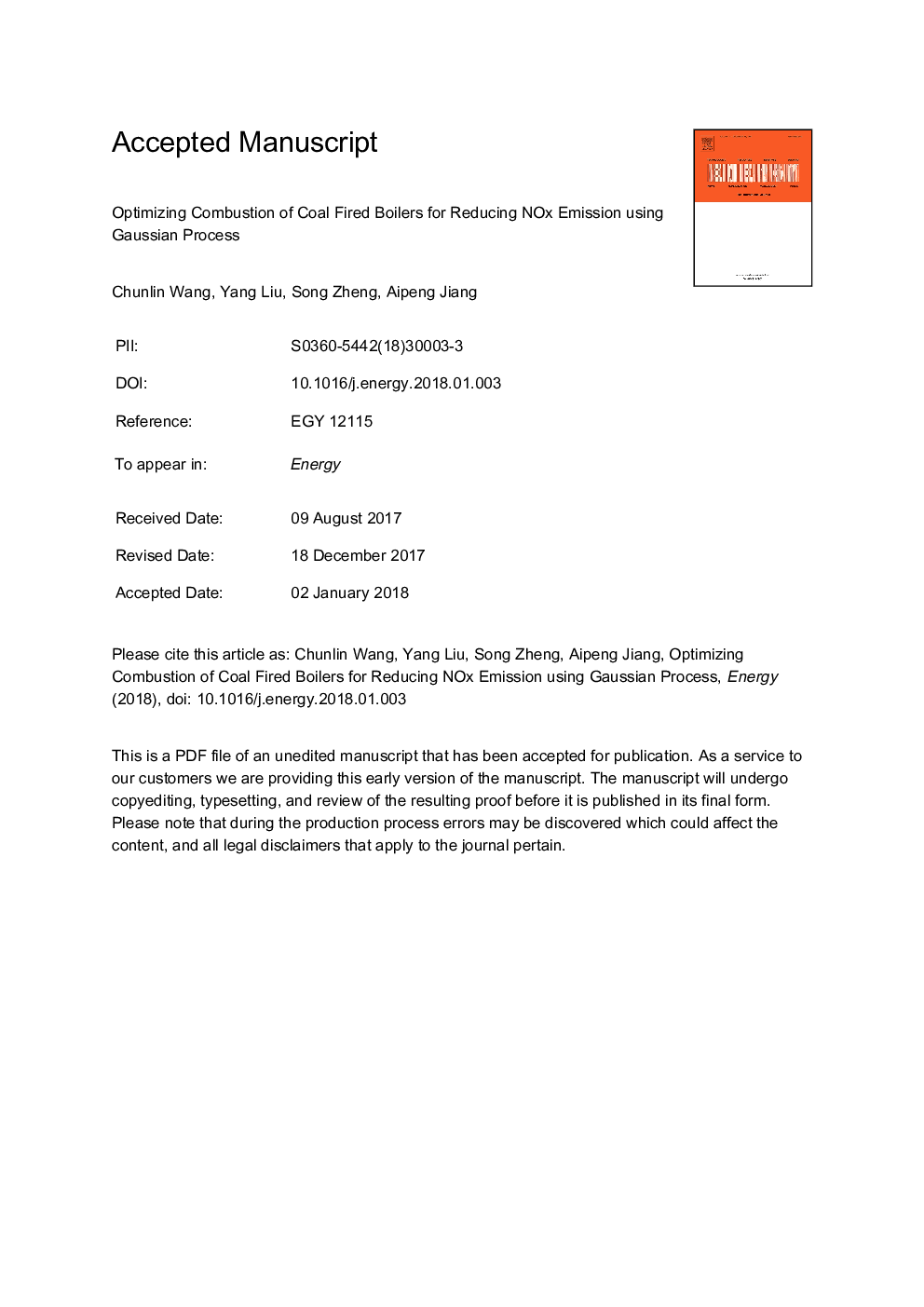| Article ID | Journal | Published Year | Pages | File Type |
|---|---|---|---|---|
| 8071553 | Energy | 2018 | 30 Pages |
Abstract
Since the mechanism of boiler combustion is extremely complicated and difficult to apply to model and optimize the combustion process directly, data-driven models attract increasingly attention from industry. This paper focuses on the application of Gaussian Process (GP) in optimizing combustion process for reducing NOx emission of a 330â¯MW boiler. GP is used to model the relationship between the NOx emission characteristic and boiler operation parameters. The hyperparameters of the GP model are optimized via Genetic Algorithm (GA). Based on 670 sets of production data from the 330â¯MW tangentially fired boiler, two GP models with 13 and 21-inputs are developed, respectively. The experimental result shows that the 21-inputs model provides better prediction performance than 13-inputs model does. The comparison between Support Vector Machines (SVM) and GP is also given under the 21-inputs circumstance. The influences of some inputs are investigated separately. Then, the predicted NOx emission is used as the objective of searching the optimal parameters for the boiler combustion. Under a given production combustion condition, the NOx decreases from 345â¯ppm to 238â¯ppm via optimizing the boiler operational parameters using the 21-inputs GP model, which is a reasonable achievement for the coal fired combustion process.
Related Topics
Physical Sciences and Engineering
Energy
Energy (General)
Authors
Chunlin Wang, Yang Liu, Song Zheng, Aipeng Jiang,
